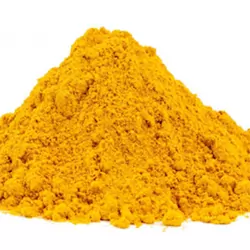
IUPAC Name
Aluminium Chloride
Cas Number
7446-70-0
HS Code
2827.32.00
Formula
AlCl3
Appearance
Yellow Solid
Common Names
Aluminium Trichloride
Packaging
20 kg plastic woven bag
Aluminium chloride, AlCl3, is well-known as a catalyst for organic reactions. This compound is soluble in water, hydrogen chloride, ethanol, chloroform, CCl4 and is slightly soluble in benzene. It is a silver-white powder but sometimes turns to yellow if it is contaminated by ferric chloride. It tends to absorb water easily (hygroscopic) to form monohydrate or hexahydrate. Aluminium chloride is a corrosive substance and it is also very toxic. It can cause high damage to the eyes, skin, and respiratory systems if inhaled or upon contact.
Aluminium chloride is widely used for Friedel-Crafts reaction as a catalyst. AlCl3 works as an electron acceptor (Lewis Acid). AlCl3 is able to direct the reaction more efficiently and effectively. This catalyst is used to synthesize alkyl benzene from alkyl halide and benzene. It is also used for many industrial applications such as petrochemical manufacture, pharmaceuticals, dyes intermediates, and other organic chemicals. Moreover, it can be used for the metallurgical industry, cosmetics, antiperspirants, metallurgical industry, and lubricants.
There are mainly two ways of synthesis: manufacturing aluminium chloride with chlorine or hydrogen chloride, or obtaining aluminium chloride by extraction from raw materials. In the former method, aluminium chloride is widely manufactured by reacting with an aluminium metal with chlorine or hydrogen chloride. This reaction occurs at a temperature ranging from 650 to 750°C and is classified as an exothermic reaction. In the latter method, to produce aluminium chloride, the aluminium metals can be extracted from raw material, such as clay or fly ash.
The preferred method of preparing anhydrous aluminium chloride comprises the steps of:
Other ways of manufacturing aluminium chloride are:
2 Al + 6 HCl → 2 AlCl3 + 3 H2